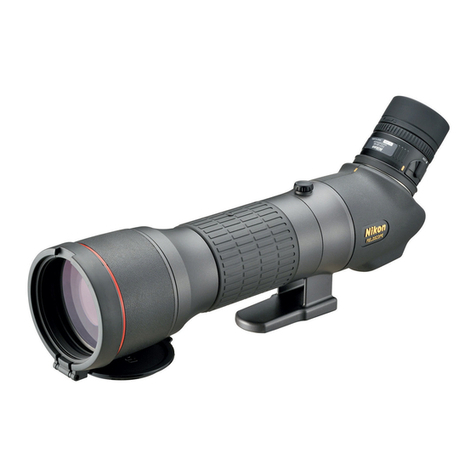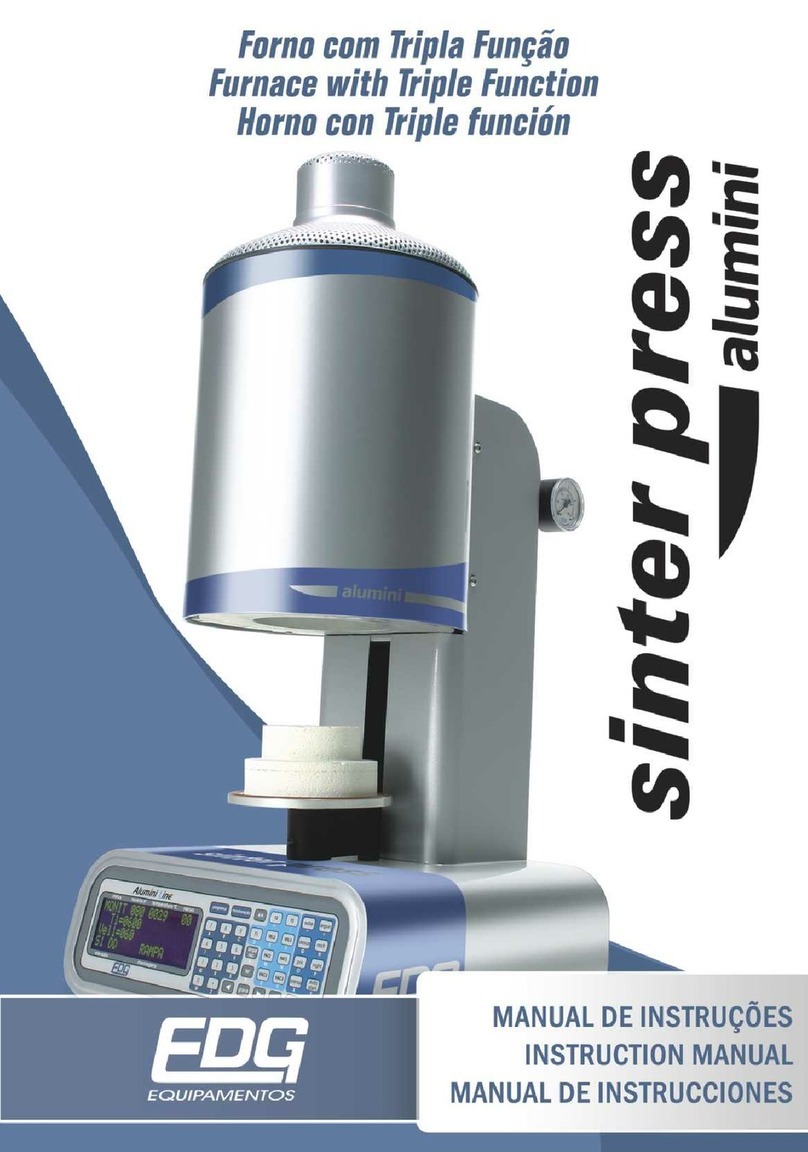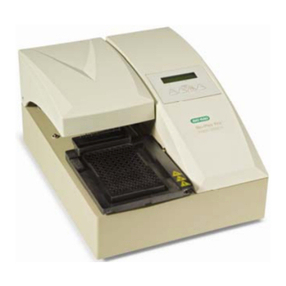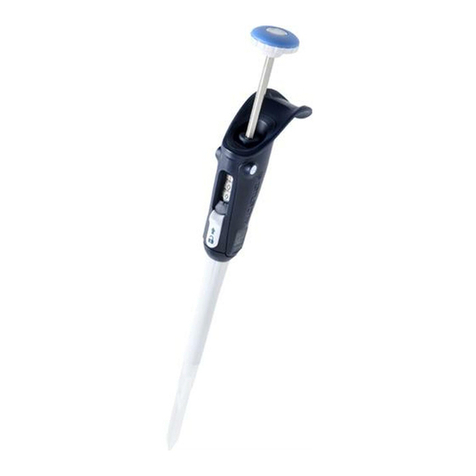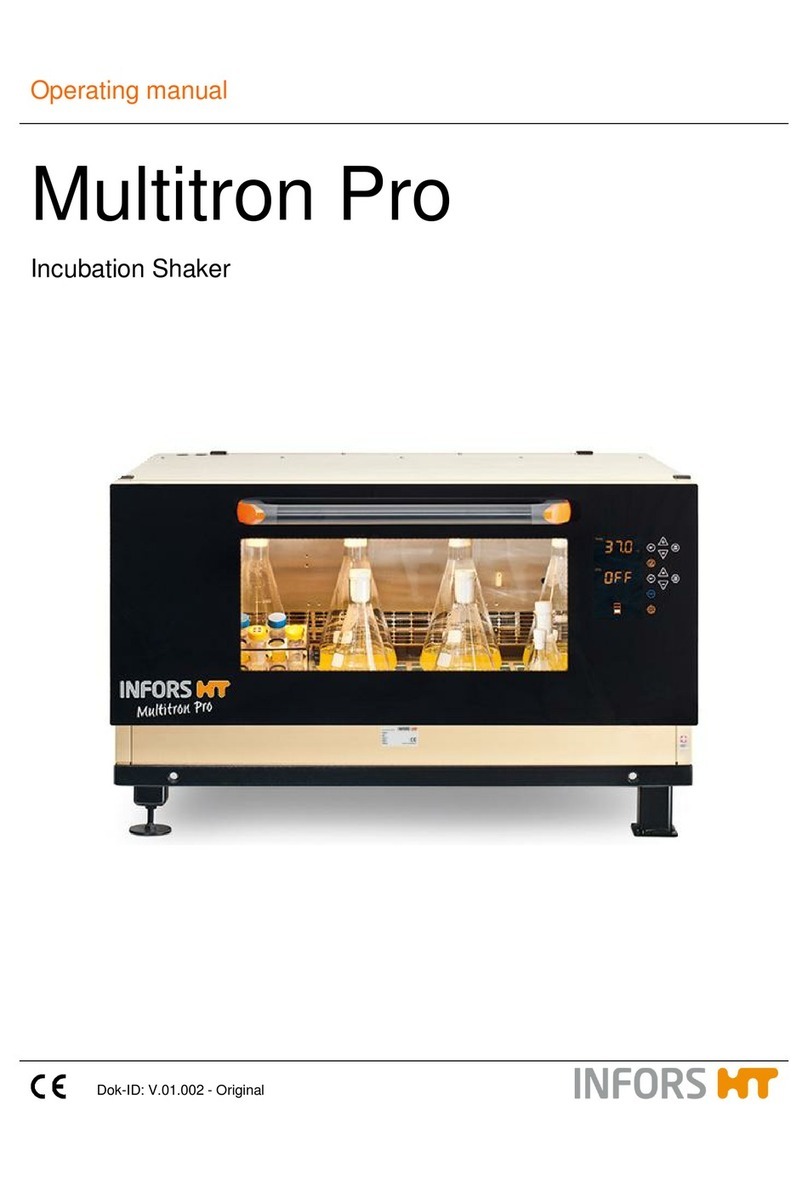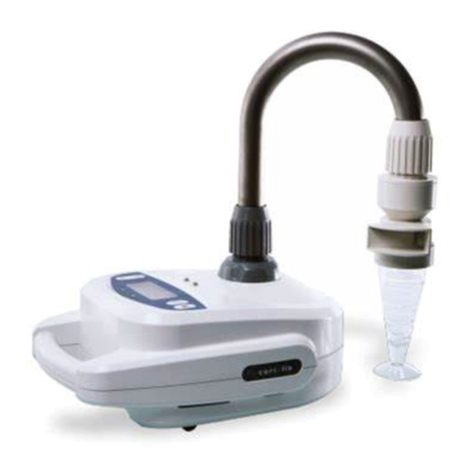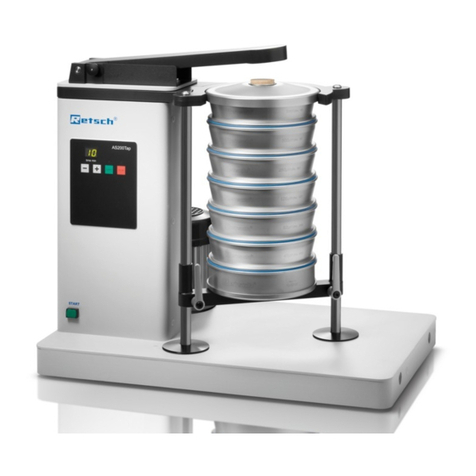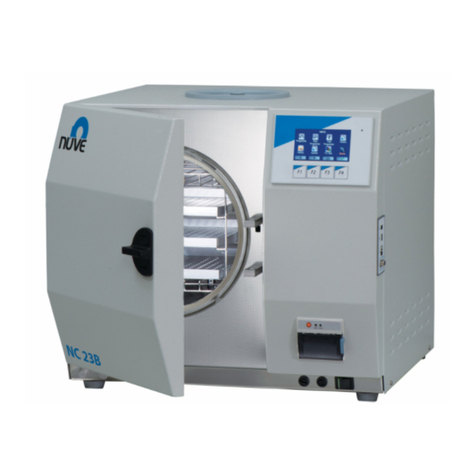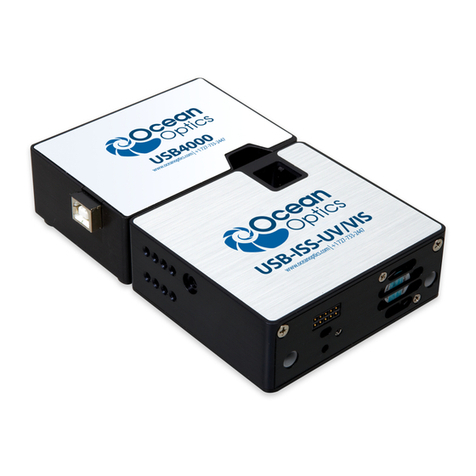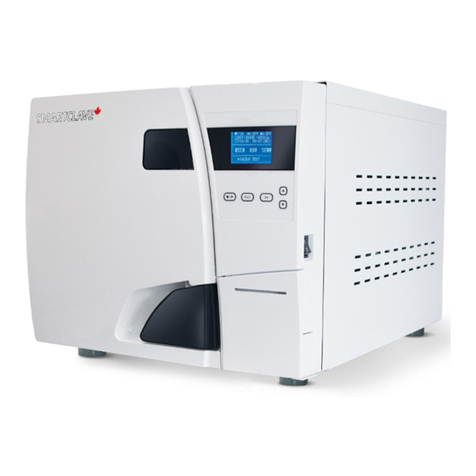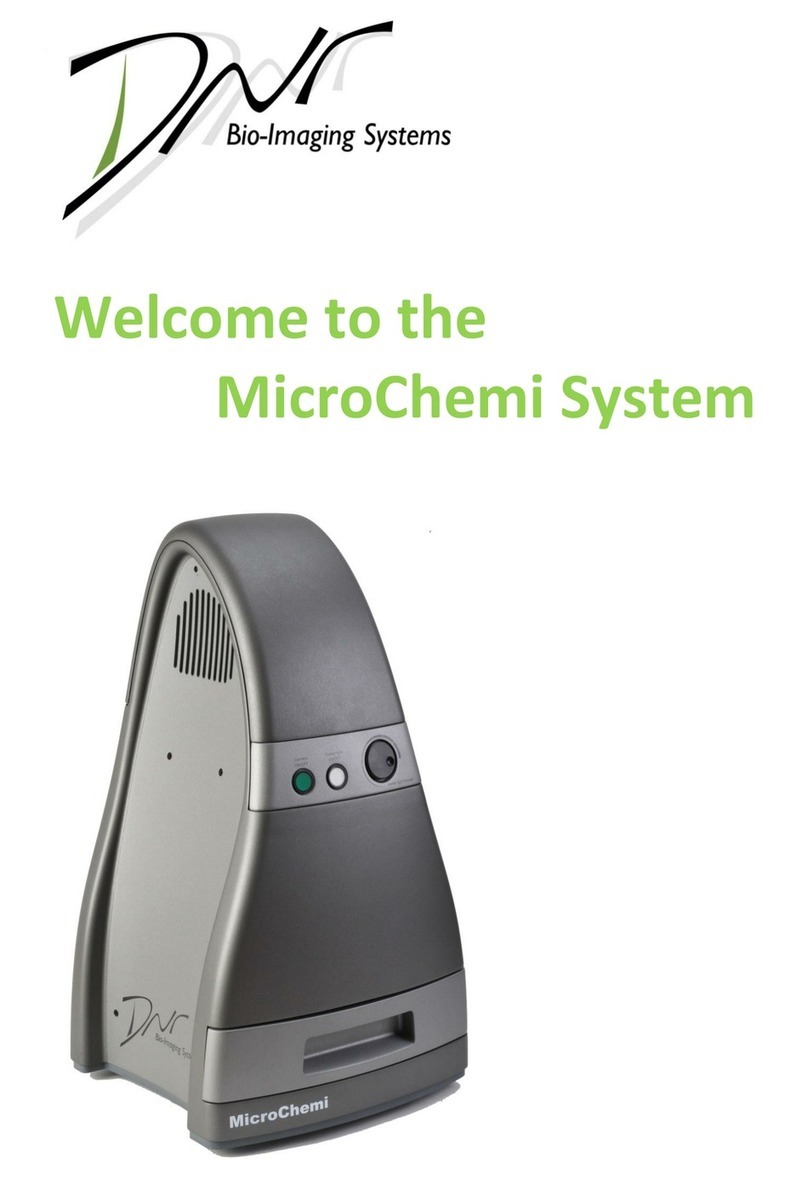EDG C1 User manual

Centrifuge C1

01
EDG MOD. -C1 Centrifuge
INSTRUCTION MANUAL
EDG EQUIPAMENTOS thanks for your preference. We describe the procedures for the proper
installation, operation and utilization of the available resources in your EDG - CI CENTRIFUGE.
The technological advances have provided new materials and revolutionary techniques to the
professionals of the prosthesis area, however, the old spring centrifuge continues the same of
100 years ago.
The was designed to provide conditions that allow a loyal model reproduction,
responding to the requisites of efficiency and security to the professional.
To better use your equipment it is necessary to consider some factors that influence in the good
filling of the model (ring).
EDG – C1 Centrifuge
PRESENTATION

02
The metal must be injected in the ring the fastest and softest as possible, avoiding chocks
and turbulence.
In the this is reached by the set of the articulated arm and the electronical
start sensor. Together they smooth the initial movement, allowing that the liquid metal flow fill in
the ring cavity without any turbulence, which is a cause of coating erosion.
EDG – C1 Centrifuge
Casting pressure
Permanence of casting pressure until the total metal solidification
Parameters settings, according to the utilized metal
The old spring centrifuges when started reach the maximum rotation that decreases gradually
during the time. In this process the pressure is in excess in the metal inlet and not enough during
its solidification, causing coating erosion at the start and the formation of depression on the
casting piece.
In the the rotation reaches the ideal value and keeps in this rotation until the
total solidification of the metal; as a result, we have a reliable casting to the model, without
bubbles and especially, without depressions, which are the most difficult ones to correct.
EDG – C1 Centrifuge
To keep the casting pressure according to the acceptable values, the working rotation must be as
bigger as smaller the density of the utilized metal is.
The start acceleration control allows that total security independent on the volume (weight) of the
metal to be cast is obtained. For small volumes the acceleration must be high and for large volumes
the acceleration must be lower in order that the metal flux in the feeding canal of the ring be allowed.
The centrifuging time control minimizes casting errors. It keeps the casting pressure until the total
solidification of the metal.

03
Casting pressure
FIG. 1

04
The security is no doubt the most critical item related to casting with spring centrifuge.
In the all the care to keep the security to the user was taken.EDG – C1 Centrifuge
(The numbers between parenthesis refer to fig. 1)
Install your in a very ventilated local, on a table or workbench. We suggest
as ideal place a brick-built workbench.
Install the equipment in such a way that facilitates its handling with the soldering pipe and the
ring furnace. Preferentially, use an automatic lighter with support, like , thus, you will
have a free hand to regulate the soldering pipe.
The leaves the factory to operate in 200 volts.
In case of 110 volts, with a screwdriver, change the tension switch placed in the backside of the
equipment to 110 volts (in order to achieve this operation it is necessary to lay down the equipment).
In the electrical installation we suggest the use of a 6mm2 wire for 110 volt network and 4mm2
wires for 220 volts. .
For your own security, do not forget to connect the grounding terminal to the proper grounding.
EDG - Cl Centrifuge
BINGA EDG
EDG - Cl centrifuge
Never use the network neutral as grounding.
1 – The centrifuge only starts after closing the protection.
2 – If, during the casting, the protection is opened inadvertently, the process will be aborted.
3 – Fast deceleration.
4 – Exclusive ring fixing that avoids the rolling of it.
5 – Ring height easy setting.
6 – Approximating device of melting pots.
7 – Exclusive balance system.
Security
Installation

05
The leaves the factory ready to operate with American- type melting
pots. If the user prefers the German- type ones, unscrew the screws that fix the melting pot’s
rack (1) to its support (12) and substitute it for a German- type rack, which comes with the machine.
EDG - C 1 Centrifuge
16 a 18 350
13 a 15
11 a 14
7 a 10
Open the protection (3) rotating it to the left.
Turn on the general switch (4) placed in the right side of the equipment base.
The pilot lamp (13) will light.
Set the casting checking the table –1.
Operation
Procedure
table –1
METAL TYPE
NOBLE METALS
CERAMICS GOLD
YELLOW GOLD
LOW FUSION
SEMI-PRECIOUS
AVERAGE DENSITY gr/cm INDICATED ROTATION RPM
400
425
450
3
PALLADIUM ALLOYS
NICKEL-CHROMIUM
BASALT CHROMIUM
NON-NOBLES METALS

06
0..................25
10..................20
100
20 10
26..................45
46......................
90
30
80
40
the (7) is the time in which the casting metal must be under pressure until its
total solidification. Several parameters influence the solidification time: ring type, coating type and
volume, alloy features, molding design, metal weight, casting temperature and etc.
The ideal centrifuge time that practically attends to all the cases is around 20 to 40 seconds. A good
parameter is the metal weight.
The table-3 below suggests values.
centrifuging time
adjust in the panel the key (6) using the criteria established in the table -2acceleration
21..................
Table -2
Table -3
METAL WEIGHT (GR)
METAL WEIGHTTIME SEC.
ACCELERATION
%

07
Counterweight setting EDG - C1 CENTRIFUGE(8): the exclusive arm design (2) of the compensates
small balance errors, letting this operation easy and simple to be executed. 4 rings come with
the centrifuge having the following sizes: 1x, 3x, 6x, 9x. In the equipment arm there are marks (14)
that indicate the counterweight position for each one of the rings above. Remove the counterweight
(8) by rotating it from the right to the left. Place it in the position relative to the used ring. Tighten the
counterweight (8) rotating it from the left to the right. To obtain the fixation of the counterweight (8) just
tighten it softly and a locking device will fixate it in the required position. For the use of rings of different
sizes from the ones provided with the equipment, it is necessary a previous test to check in which position
of the counterweight (8) it is obtained the best balance.
We will start the casting after setting all the parameters.
Take the support of the melting pot rack (12) in the direction of the center of the centrifuge arm.
Using a pincer adjust the melting pot (9) previously heated to the rack (1).
Put metal in compatible amount with the work to be executed in the melting pot (9) and heat it
with the EDG soldering pipe.
When the metal is melted, remove the ring from the furnace with a pincer and put it on its rack (10).
Adjust by means of the elevator (11) the height of the ring in such a way that the ring center be
the same as the melting pot outlet orifice.
Still using the pincer, approximate the melting pot support (12) to the ring.
When the metal is ready to melt, remove the soldering pipe quickly and rotate the protection from
the left to the right until it closes totally.
The centrifuge will automatically start and will be rotating until the end of the determined time. An
alarm will be sounded and the melting will be finished.
After the total stop of the centrifuge arm, open the equipment protection (3).
The equipment will be ready for a new melting.

08
Safety warnings
Problems & solutions
Don’t forget to connect the grounding wire.
Always calculate the amount of metal in relation to the size of the piece. Excess causes the
launching of melted metal that can damage the equipment.
Avoid keeping melting pots, rings, etc. inside the centrifuge compartment.
If they are forgotten there they will be launched in high speed causing serious damages.
When you finish a series of castings, turn off the general switch before closing the protection.
Avoid activating the equipment without melting pot or ring; it will be totally unbalanced.
The inferior lid of the equipment base can only be opened by authorized people.
The EDG Equipamentos will always be ready to attend you in case your centrifuge needs settings
or repair. However, even if the equipment is under warranty, before asking for technical assistance
check if the problem doesn’t have a simple solution. This can avoid waste of time and unnecessary
removal of the equipment.
Problem
Causes & solution
If the equipment, even being with the general switch on, does not light the pilot lamp and does not work.
Poor contact in the electrical outlet. Check if the outlet is well connected and if the electrical
network is energized.

09
Problem
Causes & solutions
If the lamp lights but the equipment works very slowly or in an irregular way.
Your electrical network tension is below the minimum allowed tension or the equipment
is selected in 110 volts and the commuter switch is in the 220 volts position. Check the
network tension and the commuting switch.
Problem
Causes & solutions
If the equipment vibrates too much.
The table on which the equipment is installed is too weak (unstable) causing the spring
effect. As a test put the equipment on the floor and turn it on.
If the vibration stops, use a stronger base.
Check if the position of the counterweight is according to the ring. Take testes varying the
position of the counterweight.
Check if the arm articulation is nor locked by accumulation of dirty or metal remaining. Clean
the articulate joint of the arm.
Check if the network tension is below the specified.
Problem
Causes & solutions
If the protective lid scratches when closed or the equipment does not work.
Metal or coating remainings are accumulated between the protective lid and
the equipment base, not allowing the free working and the total closing of the protection.

10
Problem
Causes & solution
If the ring tends to get out of the position and the metal is injected out of it
.
The ring is not fitted properly in the melting pot.
The melting pot extremity that is adapted to the ring is broken or defective.
Nominal supply sources - 110 or 220 volts (commuter)
Admissible minimum and maximum tensions - 100, 130 for nominal 110 volts
205, 230 for nominal 220 volts
Start current - 20 amp. 110 volts
10 amp. 220 volts
course current - 2,6 amp. 110 volts
1,3 amp. 220 volts
course consume - 290 watts
Network frequency 50/60 hzo
Timer from 5 to a 45 sec 15%
Rotation from 350 to 450 rpm. 5%
Dimensions (cm.) width 54 height 46 depth 57
Weight- 33Kg
Accessories - 4 rings carbon steel (lx, 3x, 6x, 9x)
- 1 base for melting pots
- Instruction manual
- warranty certificate
Technical assistance
São Carlos SP - Tel. 55 (I6) 3375-7720 * industry
Other localities call the telephone above.
Specification

Industry:
Rua Eduardo Gobato, nº 300
Bairro CEAT CEP: 13.573-440
Caixa Postal - 2096
São Carlos SP Brazil
Phone / Fax: 55 (16) 3377-9600
Sales:
Phone: 55 (11) 5051 - 5043
www.edg.com.br
Other EDG Laboratory Equipment manuals
Popular Laboratory Equipment manuals by other brands

WPI
WPI Z-LITE instruction manual
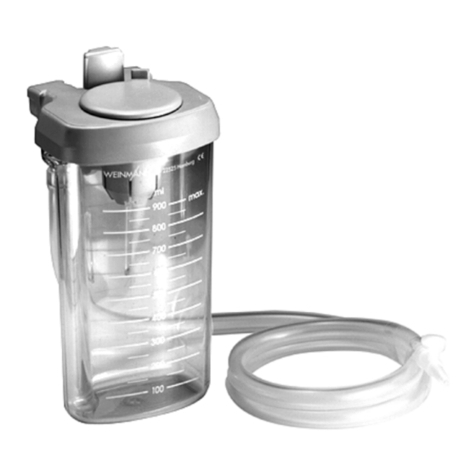
Weinmann
Weinmann ACCUVAC WM 15261 Description of the equipment and instructions for use

Gilson
Gilson MyPipetman user guide
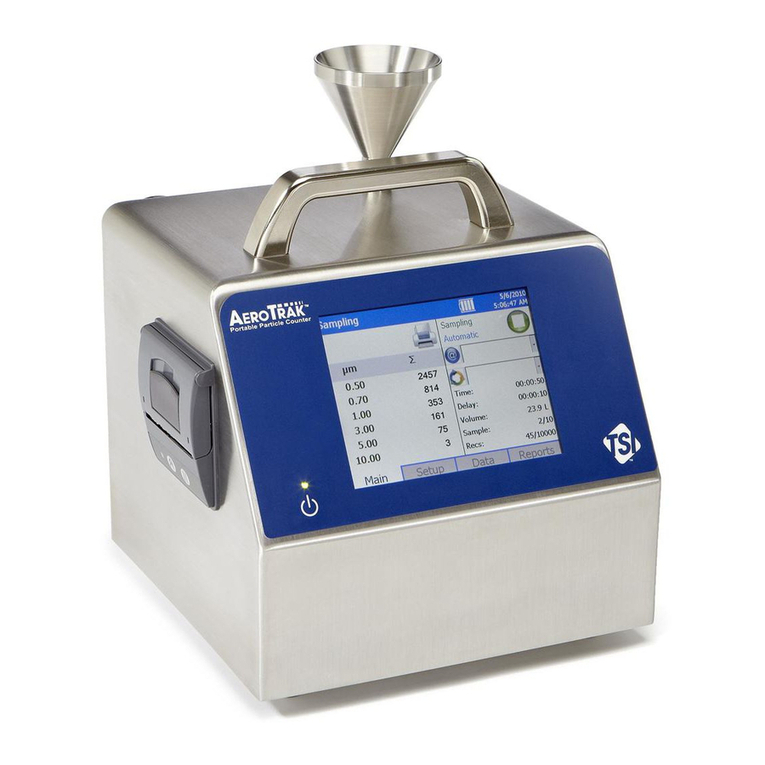
TSI Instruments
TSI Instruments AEROTRAK 9310 Operation manuals
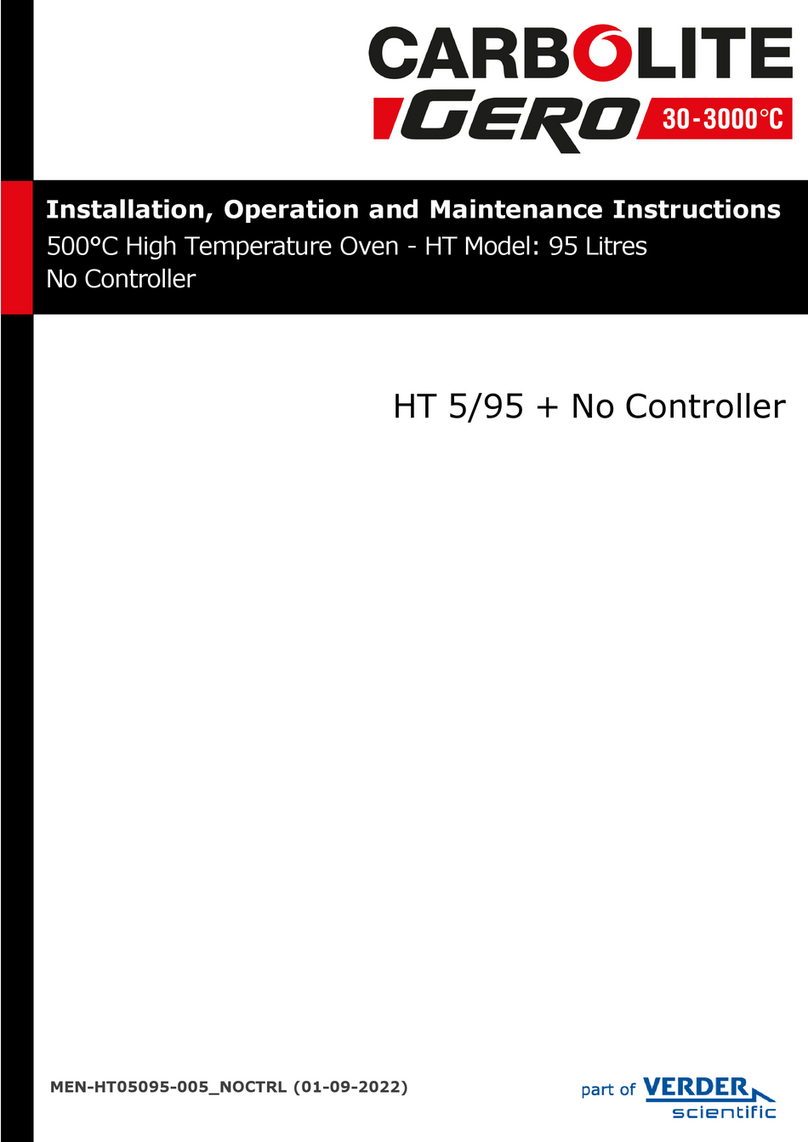
VERDER
VERDER Carbolite Gero HT 5/95 Installation, operation and maintenance instructions

Hettich
Hettich EBA 21 Series Repair instructions
